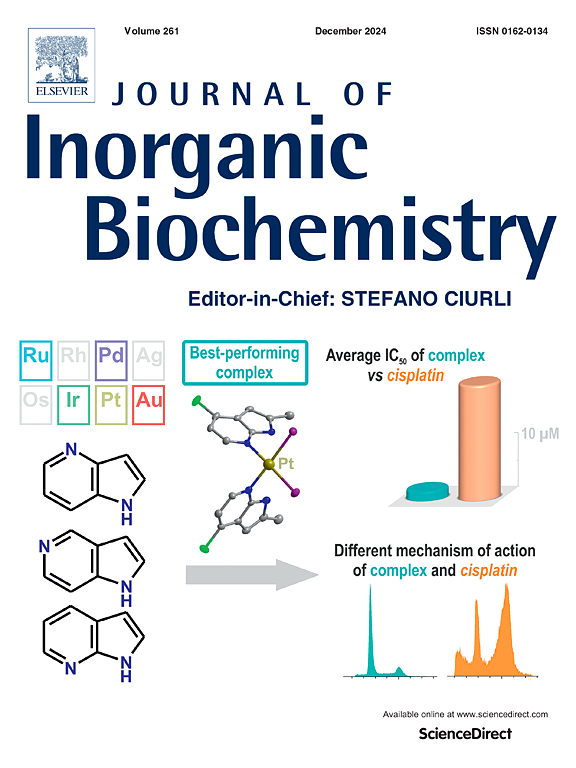Pyridine alcohols: New applications reviving interest in metal complexes of a classical ligand
IF 3.8
2区 化学
Q2 BIOCHEMISTRY & MOLECULAR BIOLOGY
引用次数: 0
Abstract
Pyridine-based alcohols and their metal complexes show unique characteristics, such as redox activity, variable coordination modes, and reactivity towards organic substrates, resulting in multifaceted properties and diverse applications. This review explores the structural properties of these ligands when coordinated to metal ions, particularly focusing on their ability to form mononuclear and polynuclear complexes with transition metals such as copper, manganese, nickel, and cobalt. Moreover, square planar complexes with silver, platinum, palladium, and gold are discussed as well. Structural studies have revealed various coordination geometries of these complexes, providing insights into their potential applications in various fields. We focus mainly on recent literature (2014–2024) and describe the structural and biological effects of the complexes. Despite the seeming obscurity of pyridine alcohol derivative ligands, we wish to emphasize their potential and the significant applications reported, highlighting the renewed interest in synthesizing coordination complexes with various metal ions.

吡啶醇:重新引起对经典配体金属配合物兴趣的新应用
吡啶基醇及其金属配合物具有氧化还原活性、可变配位模式和对有机底物的反应性等独特的特性,从而具有多方面的性质和广泛的应用。这篇综述探讨了这些配体与金属离子配合时的结构特性,特别关注它们与过渡金属如铜、锰、镍和钴形成单核和多核配合物的能力。此外,还讨论了与银、铂、钯和金的方形平面配合物。结构研究揭示了这些配合物的各种配位几何形状,为其在各个领域的潜在应用提供了见解。我们主要关注最近的文献(2014-2024),并描述了这些复合物的结构和生物学效应。尽管吡啶醇衍生物配体似乎很晦涩,但我们希望强调它们的潜力和报道的重要应用,强调合成各种金属离子配位配合物的新兴趣。
本文章由计算机程序翻译,如有差异,请以英文原文为准。
求助全文
约1分钟内获得全文
求助全文
来源期刊

Journal of Inorganic Biochemistry
生物-生化与分子生物学
CiteScore
7.00
自引率
10.30%
发文量
336
审稿时长
41 days
期刊介绍:
The Journal of Inorganic Biochemistry is an established international forum for research in all aspects of Biological Inorganic Chemistry. Original papers of a high scientific level are published in the form of Articles (full length papers), Short Communications, Focused Reviews and Bioinorganic Methods. Topics include: the chemistry, structure and function of metalloenzymes; the interaction of inorganic ions and molecules with proteins and nucleic acids; the synthesis and properties of coordination complexes of biological interest including both structural and functional model systems; the function of metal- containing systems in the regulation of gene expression; the role of metals in medicine; the application of spectroscopic methods to determine the structure of metallobiomolecules; the preparation and characterization of metal-based biomaterials; and related systems. The emphasis of the Journal is on the structure and mechanism of action of metallobiomolecules.
 求助内容:
求助内容: 应助结果提醒方式:
应助结果提醒方式:


